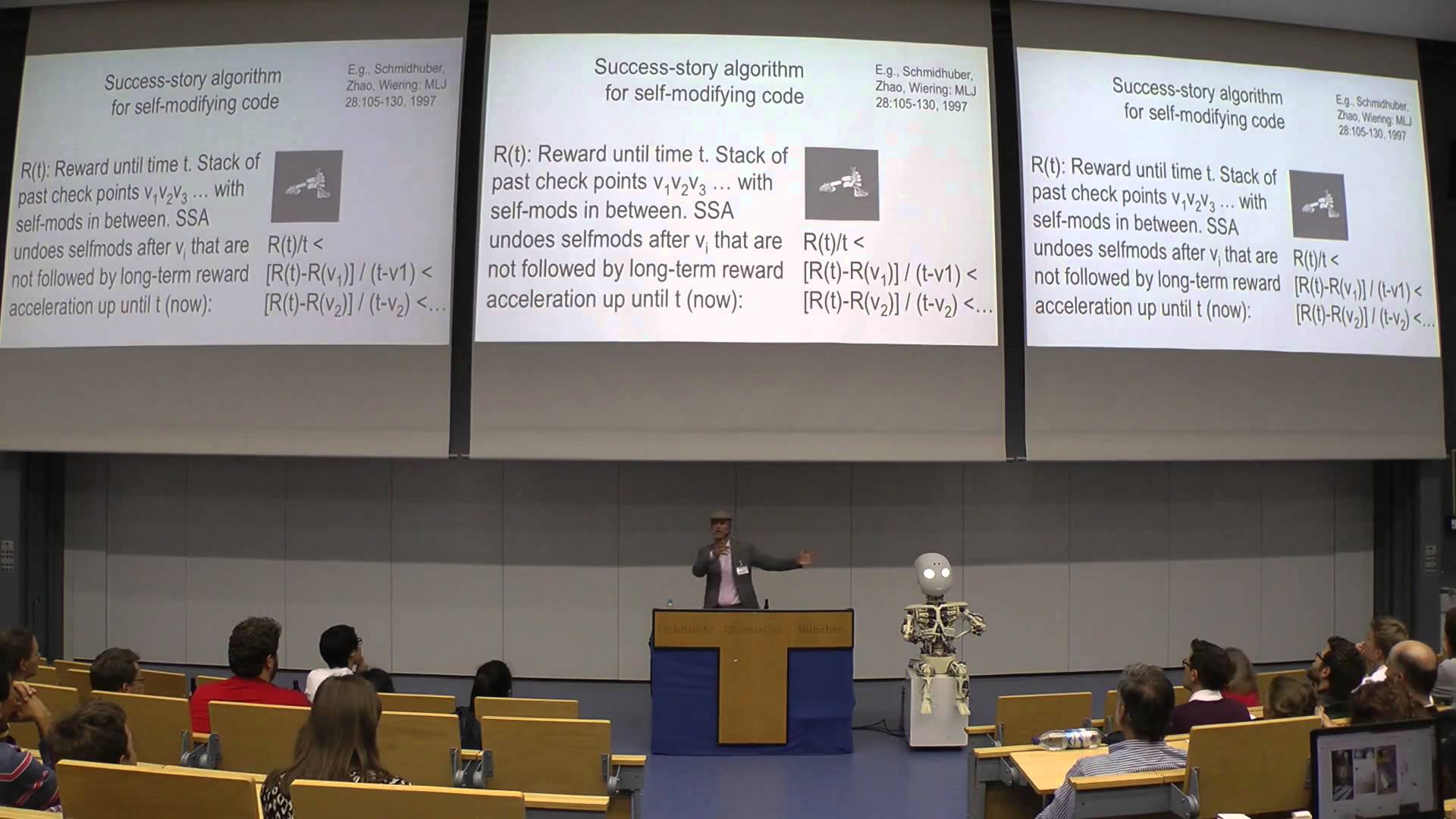Jan 4, 2016
London to NYC in one hour courtesy of the new Airbus jet design
Posted by Shailesh Prasad in category: transportation
Have breakfast in London and lunch in New York thanks to the futuristic new jet design from Airbus.
Have breakfast in London and lunch in New York thanks to the futuristic new jet design from Airbus.

 Deep Learning in Action | A talk by Juergen Schmidhuber, PhD at the Deep Learning in Action talk series in October 2015. He is professor in computer science at the Dalle Molle Institute for Artificial Intelligence Research, part of the University of Applied Sciences and Arts of Southern Switzerland.
Deep Learning in Action | A talk by Juergen Schmidhuber, PhD at the Deep Learning in Action talk series in October 2015. He is professor in computer science at the Dalle Molle Institute for Artificial Intelligence Research, part of the University of Applied Sciences and Arts of Southern Switzerland.
Juergen Schmidhuber, PhD | I review 3 decades of our research on both gradient based and more general problem solvers that search the space of algorithms running on general purpose computers with internal memory.
Continue reading “Deep Learning in Action | How to learn an algorithm” »

Your favorite films just got a lot shorter.
Free CHTV video podcast on iTunes:
http://phobos.apple.com/WebObjects/MZStore.woa/wa/viewPodcast?id=268957390
DARPA funds the Atoms-to-Products program that aims to maintain quantum nanoscale properties at the millimeter scale of microchips.
The main goal of the atoms-to-products program is to create technology and processes needed to create nanometer-scale pieces, with dimensions almost the size of atoms, into components and materials only millimeter scale in size. And to spur developments in the program DARPA has now posed the challenge to 10 laboratories across the nation.
To get the full benefits of nanoscale engineering at the millimeter scale, the organization has partnered with Intelligent Materials Solutions. “Our initial project will be to control infrared light by assembling nanoscale particles into finished components that are one million times larger,” explains Adam Gross, the team leader working closely with Christopher Roper to bring the Atoms-to Products project to fruition.
LG Display has a prototype 18-inch screen it’s showing off at the Consumer Electronics Show this week that rolls up like a piece of paper. The technology builds on LG’s forward-looking OLED work focusing on bendable, rollable, and curving displays. The company showed similar technology last year as a proof of concept, but kept images behind closed doors. Now LG looks ready to show the world.
We’ve seen this type of concept display from the likes of Sony, Samsung, Sharp, and others in the past. However, it does indicate that LG sees these types of futuristic displays as differentiation points for smartphones, tablets, and TVs. LG envisions these types of screens rolling up into our pockets or being made to wrap around interior spaces, and the company will show off a 25-inch curved screen installed on the inside of a car at its Auto Zone section on the show floor.
We’ll get a closer look at the newspaper-like screen in a couple of days, as well as a new 55-inch “paper thin” TV that has all its electronics installed independently, according to LG. So check back in with The Verge for LG coverage and everything else CES-related throughout the week.
Mark Zuckerberg wants to live a bit more like Tony Stark. In a post on Facebook this afternoon, Zuckerberg wrote that he intends to build an AI that can run his home and present him with virtual reality visualizations of his work. “You can think of it kind of like Jarvis in Iron Man,” Zuckerberg writes.
Zuckerberg’s vision starts basic but gets a lot more ambitious. “I’m going to start by exploring what technology is already out there,” he writes. That should be able to handle his initial goals, like controlling “music, lights, temperature, and so on.” He also wants this system to recognize when friends are at the front door and let them in, alert him if his newborn daughter needs attention, and to do all of this only when it recognizes the person speaking. For the most part, that’s all doable even for the non-billionaire home builder. Zuckerberg has already found one product that he likes: “For just music, the Amazon Echo is pretty great. It’s been very useful for controlling music with my voice while both hands are occupied taking care of Max.”
The more challenging aspects of the project include making it work without direct input by him or Priscilla Chan, his wife. “I’m very interested in using voice and face recognition to set lights and temperature as well depending on who is in what rooms, etc,” he writes. “For example, I like rooms colder than Cilla, and but it’s possible to just see who is in what room and adjust the temperatures automatically.”
Patients needing surgery to reconstruct body parts such as noses and ears could soon have treatment using cartilage which has been grown in a lab.
The process involves growing someone’s cells in an incubator and then mixing them with a liquid which is 3D printed into the jelly-like shape needed.
It is then put back in an incubator to grow again until it is ready.
Three research groups, working independently of one another, reported in the journal Science on Thursday that they had used the Crispr-Cas9 technique to treat mice with a defective dystrophin gene. Each group loaded the DNA-cutting system onto a virus that infected the mice’s muscle cells, and excised from the gene a defective stretch of DNA known as an exon.
Without the defective exon, the muscle cells made a shortened dystrophin protein that was nonetheless functional, giving all of the mice more strength.
The teams were led by Charles A. Gersbach of Duke University, Eric N. Olson of the University of Texas Southwestern Medical Center and Amy J. Wagers of Harvard University.
